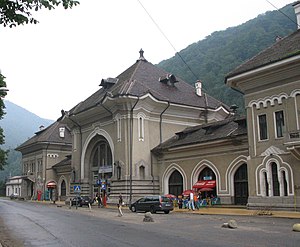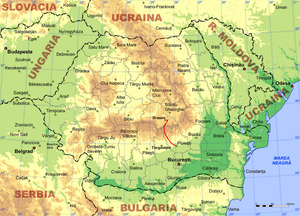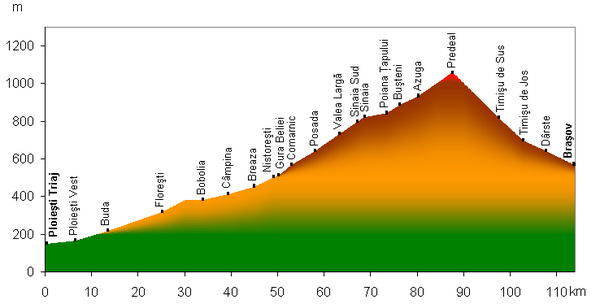Ploieşti – Braşov railway line
| Ploieşti – Braşov | |||||||||||||||||||||||||||||||||||||||||||||||||||||||||||||||||||||||||||||||||||||||||||||||||||||||||||||||||||||||||||||||||||||||||||||||||||||||||||||||||||||||||
|---|---|---|---|---|---|---|---|---|---|---|---|---|---|---|---|---|---|---|---|---|---|---|---|---|---|---|---|---|---|---|---|---|---|---|---|---|---|---|---|---|---|---|---|---|---|---|---|---|---|---|---|---|---|---|---|---|---|---|---|---|---|---|---|---|---|---|---|---|---|---|---|---|---|---|---|---|---|---|---|---|---|---|---|---|---|---|---|---|---|---|---|---|---|---|---|---|---|---|---|---|---|---|---|---|---|---|---|---|---|---|---|---|---|---|---|---|---|---|---|---|---|---|---|---|---|---|---|---|---|---|---|---|---|---|---|---|---|---|---|---|---|---|---|---|---|---|---|---|---|---|---|---|---|---|---|---|---|---|---|---|---|---|---|---|---|---|---|---|---|
|
Railway station in Sinaia
| |||||||||||||||||||||||||||||||||||||||||||||||||||||||||||||||||||||||||||||||||||||||||||||||||||||||||||||||||||||||||||||||||||||||||||||||||||||||||||||||||||||||||
| Course book route (CFR) : | 300 | ||||||||||||||||||||||||||||||||||||||||||||||||||||||||||||||||||||||||||||||||||||||||||||||||||||||||||||||||||||||||||||||||||||||||||||||||||||||||||||||||||||||||
| Route length: | 113.9 km | ||||||||||||||||||||||||||||||||||||||||||||||||||||||||||||||||||||||||||||||||||||||||||||||||||||||||||||||||||||||||||||||||||||||||||||||||||||||||||||||||||||||||
| Gauge : | 1435 mm ( standard gauge ) | ||||||||||||||||||||||||||||||||||||||||||||||||||||||||||||||||||||||||||||||||||||||||||||||||||||||||||||||||||||||||||||||||||||||||||||||||||||||||||||||||||||||||
| Power system : | 25 kV 50 Hz ~ | ||||||||||||||||||||||||||||||||||||||||||||||||||||||||||||||||||||||||||||||||||||||||||||||||||||||||||||||||||||||||||||||||||||||||||||||||||||||||||||||||||||||||
|
|||||||||||||||||||||||||||||||||||||||||||||||||||||||||||||||||||||||||||||||||||||||||||||||||||||||||||||||||||||||||||||||||||||||||||||||||||||||||||||||||||||||||
The Ploieşti – Braşov railway is a main line in Romania . It leads from Wallachia over the Carpathian Mountains to south-east Transylvania .
history
In the second half of the 19th century, Transylvania was part of the Kingdom of Hungary . There was no rail link between Hungary and Romania until 1879.
At the beginning of the 1870s, both governments agreed to first build two cross-border railway lines, at Orșova and via Predeal . Romania favored the former, Hungary the latter, so it was agreed to open both routes at the same time. In 1874, Hungary and Romania signed a specific contract for the construction of the line via Predeal. August 15, 1878 was agreed as the opening date.
The prerequisites on both sides were given with the commissioning of the lines Bucharest – Roman in 1872 in Romania and Teiuş – Braşov in 1873 in Hungary.
On the Hungarian side, the construction work for the line from Brașov (German Kronstadt , Hungarian Brassó ) and through the Timiș Valley was completed by 1878. The core of the section were two tunnels on the north side of the Predeal Pass.
The construction in Romania was accompanied by a scandal: the concession for the construction was given to the English entrepreneur George B. Crawley. He immediately started work, but had to stop it in 1877 due to non-payments from the Romanian government, which was in massive financial difficulties. The concession contract was dissolved in 1877; despite payment of compensation, Crawley was driven into bankruptcy . After further delays caused by the Russo-Ottoman War (1877–1878) , a French company took over the construction, led by engineer Léon Guilloux. Three smaller tunnels were built on the Romanian part of the route, which were abandoned during later renovation and expansion work. On June 10, 1879, the connection from Ploieşti to Predeal was officially opened, with the section from Câmpina to Sinaia still having to be managed by horse-drawn vehicles in a kind of "rail replacement service" until December 1, 1879. Predeal got the function of a border station between Austria-Hungary and Romania.
After the end of the First World War , Transylvania became a part of Romania, so that the railway line described here lay entirely on Romanian territory. At the beginning of the 1930s, the line was to be electrified. For financial reasons, however, the CFR opts for dieselization. After the first double locomotive of the DE 241 series was delivered in 1937 , other vehicles were to follow; this plan did not materialize in the subsequent Second World War. In 1940 the double-track expansion took place; the two tunnels on the north side had to be supplemented by parallel tunnels.
electrification
The increasing volume of traffic during the interwar period called for new, more efficient methods of train transport, especially on the steep section between Brașov and Predeal. Electrification was also discussed, with alternating current 15 kV, 16 2/3 Hz; later electrical operations were to be extended to Bucharest. The trains were to be transported with the most modern German-made locomotives of the time, the E 18 and E 94; for this purpose a delegation of the CFR on 28/29. In April 1942, the E 94 060 and a train of 600 tons made measurement runs on the Brenner.
Between 1965 and 1969, electrification and the start of electrical operation between Brașov and Bucharest with alternating current (25 kV, 50 Hz) took place in stages. However, the section between Brașov and Predeal had been electrified since 1960 (the first catenary mast was installed in Predeal on December 27, 1960) because tests were being carried out with electric locomotives from various manufacturers on this difficult mountain railway, which had previously served as a test route wanted to. The Swedish company ASEA emerged victorious from the competition with two specially adapted rectifier locomotives Rb 1001 and 1002 of the SJ, from which the prototypes of the LE 5100 (series 40, 41, 42) delivered in 1965 in Romania (at Electroputere in Craiova ) manufactured under license ) and the prototypes delivered in 1967 in Yugoslavia ( Rade Koncar Zagreb ), also built under license, LE 3400 (series 441 of the former Yugoslavian railways, from which CFR series 43 and 44) were derived.
Current situation
The entire line is double-track and electrified with alternating current (25 kV, 50 Hz). It is heavily frequented by both passenger and freight traffic.
The section (Bucharest–) Ploiesti – Predeal (as of 2014) was largely renovated with EU funds.
Web links / sources
- The Romanian railway network at weltkarte.com
- Map of the Romanian railway network (PDF; 260 kB)
- Information about the crossing of the Carpathians at Predeal (Rum.), With pictures ( Memento from December 6, 2015 in the Internet Archive )
- Bäzold, Dieter, and Fiebig Günther: Electric locomotive archive, electric locomotives of the Deutsche Reichsbahn-Gesellschaft, the Deutsche Reichsbahn and other German railway administrations, Berlin (East) 1970 (Transpress, VEB Verlag für Verkehrwesen Berlin)
Individual evidence
- ↑ a b c Website of the CFR, ( Memento of February 12, 2001 in the Internet Archive )
- ↑ Michael Wedekind: The Transylvanian Carpathian Association (1880-1944). A contribution to the social history of Transylvania. Westfälische Wilhelms Universität Münster 2004. p. 7
- ^ Lothar Maier: Romania on the way to the declaration of independence 1866–1877: appearance and reality of a liberal constitution and state sovereignty. Oldenbourg Wissenschaftsverlag, 1989. pp. 227-179
- ↑ Chronicle of the Railway . HEEL Verlag, Königswinter 2005, ISBN 3-89880-413-5 , p. 368 ff .
- ↑ Hans-Dieter Andreas, Manfred Herb, "The German Crocodiles, Electric Locomotive Series E 93 and E 94", Verlag Wolfgang Zeunert, Gifhorn, 1981 (Electric Locomotive Books series), p. 78.
- ↑ Information from trenulete.ro ( Memento from December 7, 2009 in the Internet Archive )


